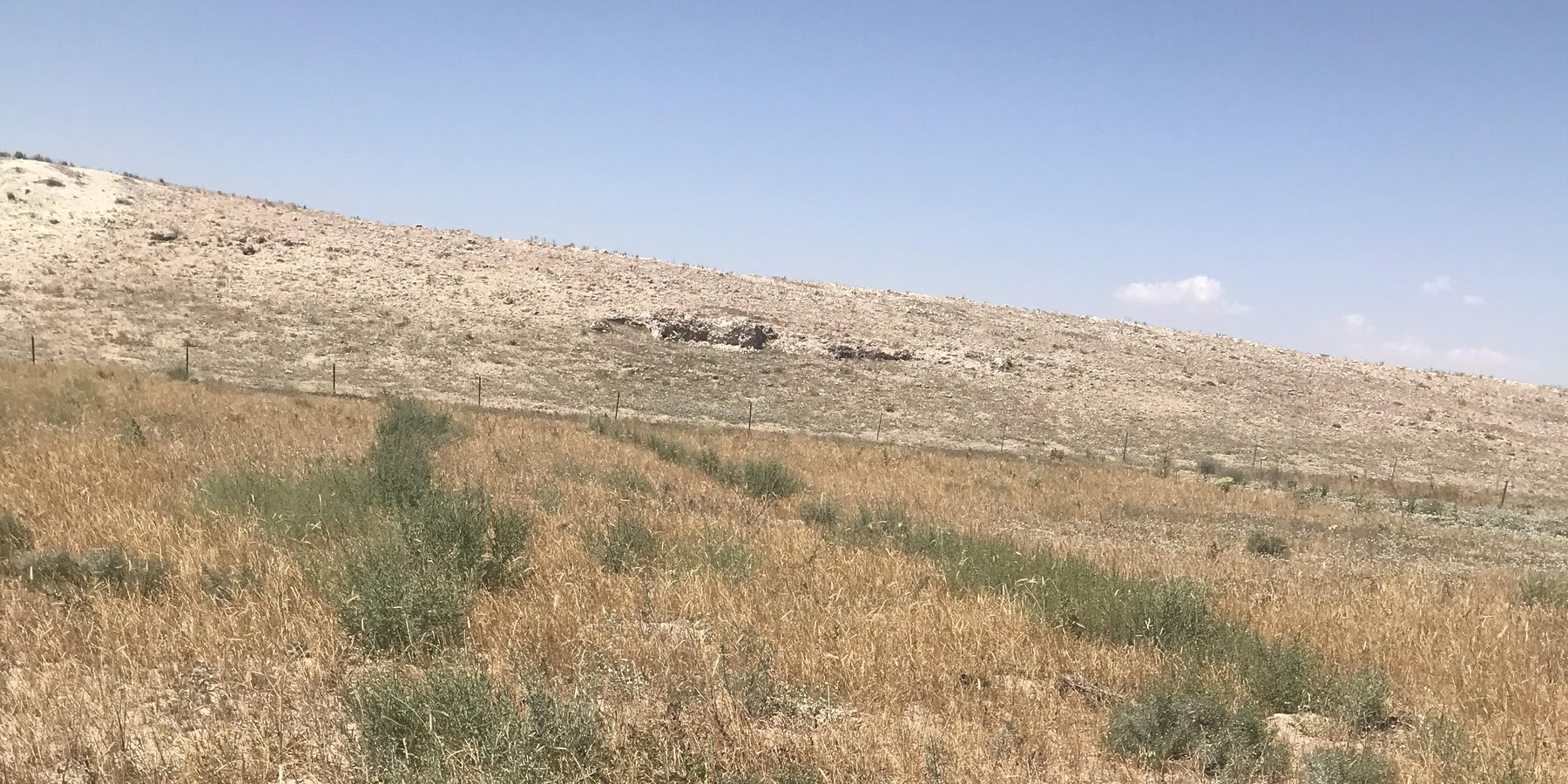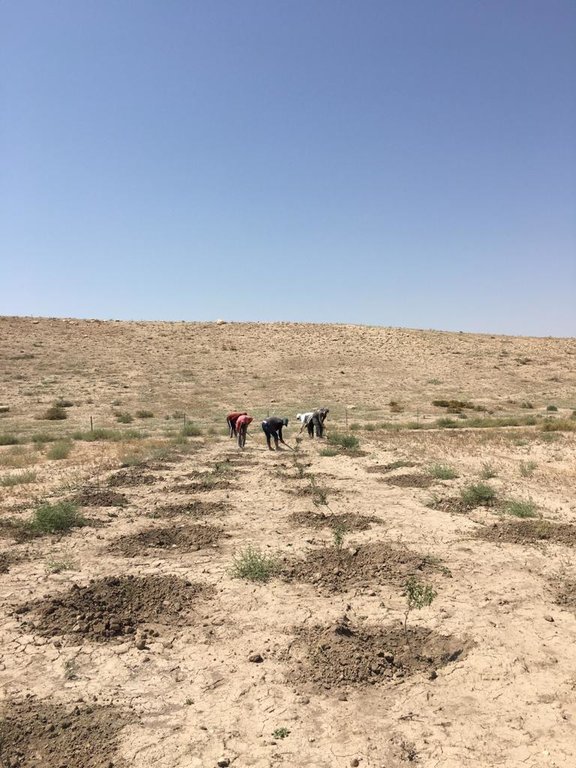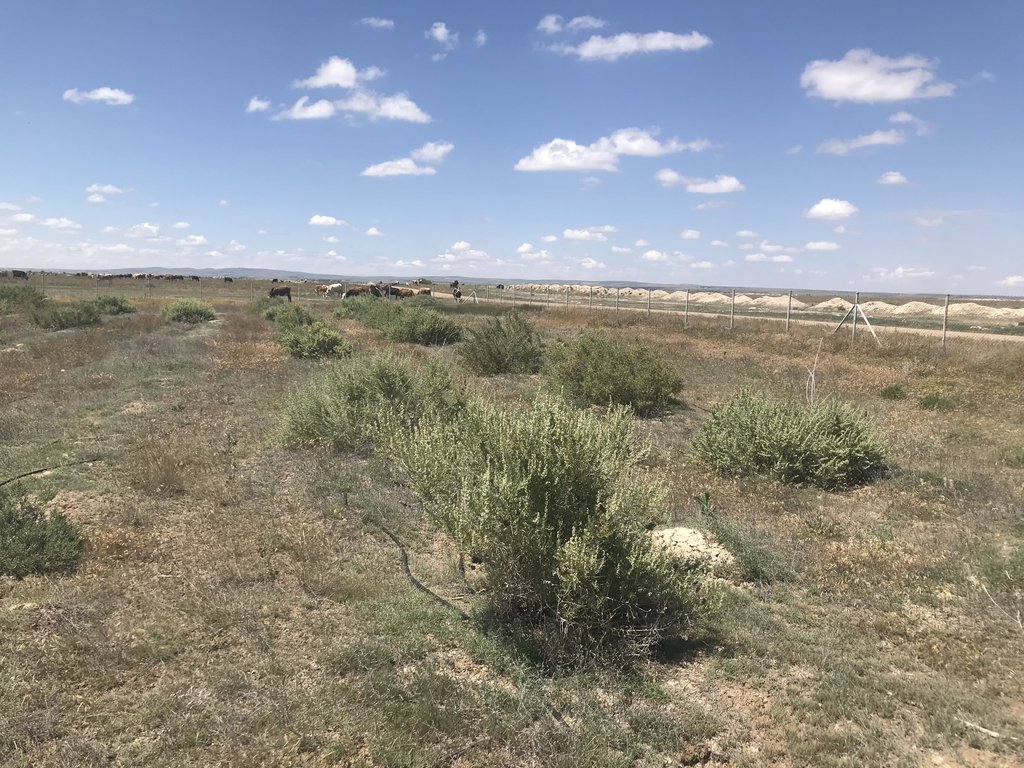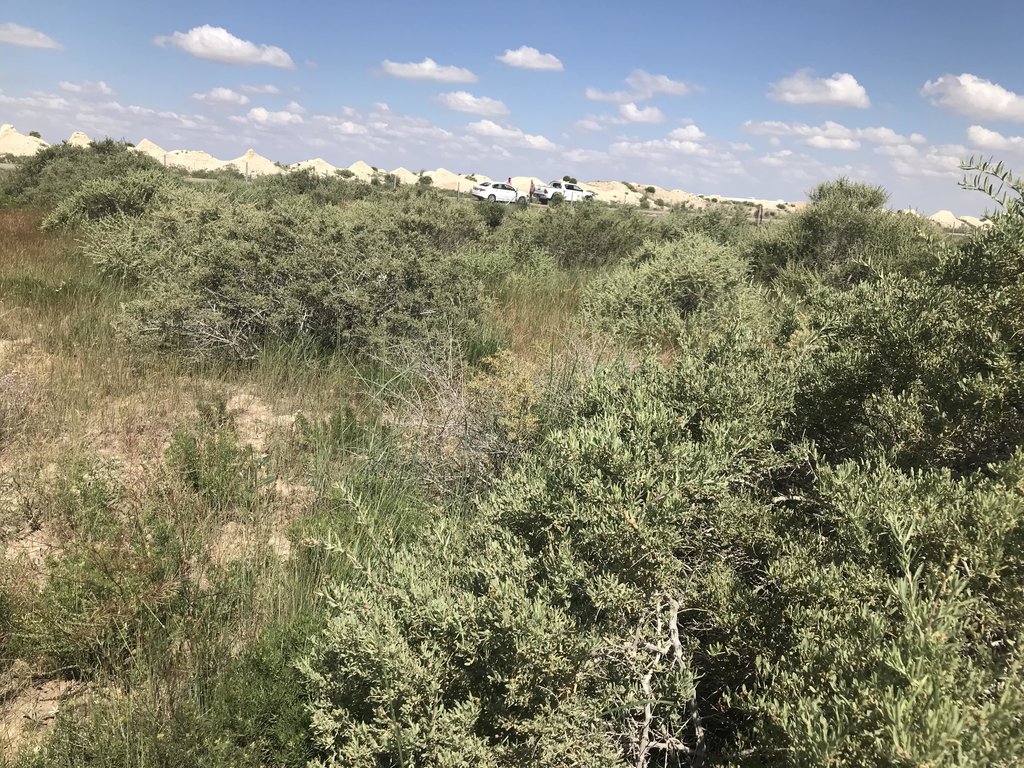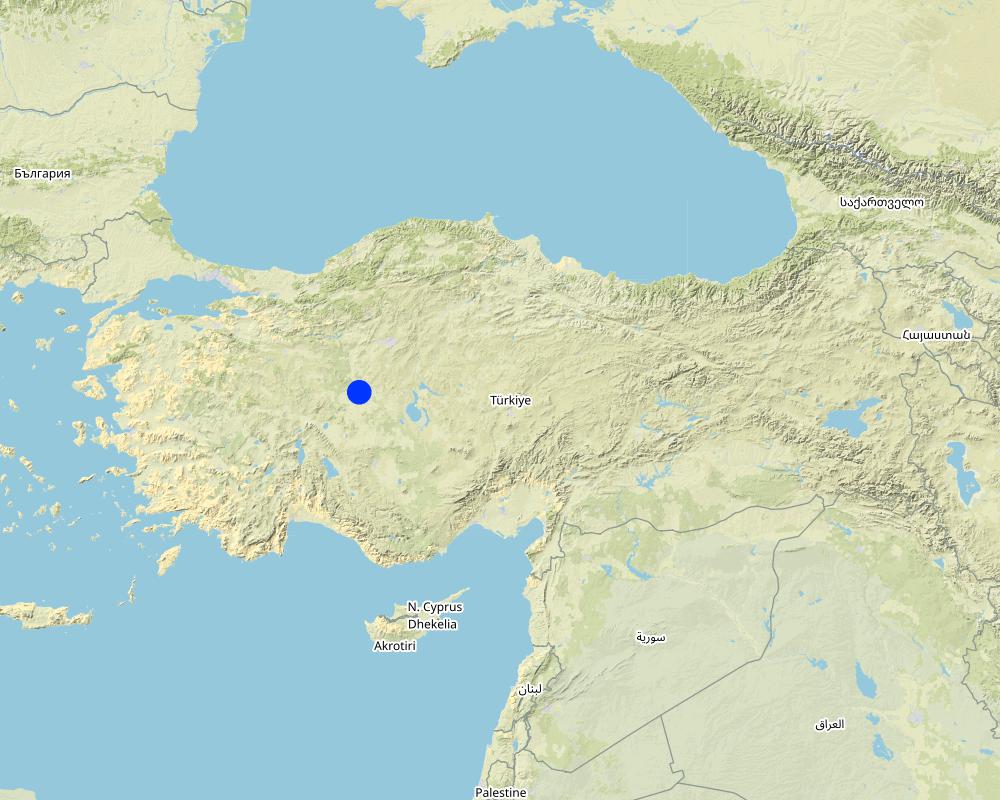Sustainable pasture improvement in the arid and semiarid lands of Turkiye [Турция]
- Создание:
- Обновить:
- Составитель: Bilgi Sarihan
- Редактор: –
- Рецензенты: William Critchley, Rima Mekdaschi Studer
approaches_6321 - Турция
Просмотреть разделы
Развернуть все Свернуть все1. Общая информация
1.2 Контактные данные специалистов и организаций, участвующих в описании и оценке Подхода
Название организации (-ий), содействовавших документированию/оценке Подхода (если применимо)
General Directorate Combating Desertification and Erosion (General Directorate Combating Desertification and Erosion) - Турция1.3 Условия, регламентирующие использование собранных ВОКАТ данных
Когда были собраны данные (на местах)?
26/06/2021
Составитель и ответственный/-ые специалист(-ы) согласны с условиями, регламентирующими использование собранных ВОКАТ данных:
Да
2. Описание Подхода УЗП
2.1 Краткое описание Подхода
Natural pastures have insufficient capacity to produce forage in the semi-arid rangelands of Central Anatolian Region. Therefore, a project has been initiated to plant forage shrubs which are drought and salinity tolerant in order to rehabilitate these pasturelands.
2.2 Подробное описание Подхода
Подробное описание Подхода:
Approximately 65% of Turkiye’s surface area (78 million hectares in total) consists of arid and semiarid areas, and this is where most of the pasturelands are located. These areas are deprived of vegetation and under threat of wind erosion. In addition, salinity is a serious problem on approximately 2 million hectares. In recent years, the General Directorate of Combating Desertification and Erosion has been implementing projects to improve pasture quality in arid and salty areas by planting adapted shrubs. Natural pastures have insufficient capacity to produce forage sustainably. Droughts, which are increasingly felt with global warming and climate change, have further limited forage production, especially in Central Anatolian Region’s rangelands. A project was initiated in the dry, nutrient-poor and heavy soils land within the borders of Kırsehir (Malya) and Ankara (Polatli) Agricultural Operations Directorate. Forage shrubs and herbaceous plants which are resistant to drought and overgrazing were selected: namely Atriplex canescens, Kochia prostrata, Agropyron elongatum and Agropyron intermedium. Atriplex canescens is, in particular, drought tolerant and rapidly increases the yield of animal feed in degraded pastures. No chemical fertilizer was applied to this species, which was given limited water only for the first two years after planting. Despite this, the plants grew successfully. It is thought that the continuity of the pasture established in this approach is possible in most of the arid areas. The management of the improved field will be provided by planned grazing. One year, part of the pasture will be opened for grazing in one season, while other parts will be opened for grazing in the second year. In this way, land degradation of the area will be prevented. One of the primary goals of this project is to contribute to the improvement of degraded pasture's biomass productivity. The project also support efforts to prevent wind erosion. Under the project, adaptation to drought, growth and biomass of the planted and cultivated species are monitored, and their contribution to the regional livestock's feed source capacity and soil fertility are recorded. Above all, the approach will help to provide sustainable land improvement, especially where livestock keepers face challenges with drought.
2.3 Фотографии, иллюстрирующие Подход
2.5 Страна/ регион/ место, где применялся Подход
Страна:
Турция
Административная единица (Район/Область):
The Central Anatolian Region
Map
×2.6 Даты начала и окончания реализации Подхода
Если год начала реализации Подхода достоверно неизвестен, дайте примерную оценку:
менее 10 лет назад (недавняя)
2.7 Тип Подхода
- в рамках проекта/ программы
2.8 Каковы цели/ задачи Подхода
To summarize the objectives of the aproach:
- Creating wind protection strips by planting shrub species - that are adaptable to wind erosion, drought and barrenness, to protect the soil surface from wind erosion,
- Growing shrubs and herbaceous forage crops in the field in order to reduce the scarcity of feed resources in arid and semi-arid lands,
- Increase the income of the rural population from livestock keeping,
- Improve the soil health and soil physical quality in terms of providing important ecosystem services,
- Contribute to the transformation of arid and semi-arid areas into Carbon Sink Areas,
- Serve the objectives of Land Degradation Neutrality,
2.9 Условия содействующие применению Технологии/ Технологий в рамках Подхода или затрудняющие его
Сотрудничество/ координация действий
- содействуют
General Directorate Combating desertification and erosion collaborate with the General Directorate of Agricultural Operations and its all local departments. General Directorate Combating desertification and erosion also has collboration with the livestock keepers.
Нормативно-правовая база (землевладение, права на земле- и водопользование)
- содействуют
The land ownership regime has helped the approach implementation. Project areas belong to state, so applying the project isn't a problem.
Программные документы/ руководящие установки
- содействуют
Pasture laws support sustainable pasture management.
Осведомленность в области УЗП, доступность технической поддержки
- содействуют
The project includes technical support of the General Directorate Combating desertification and erosion
Объем работ, доступность рабочей силы
- содействуют
People who live in rural areas understand the importance of the pasture rehabilitation in terms of livestock, so they contribute with manpower.
3. Участие и распределение ролей заинтересованных сторон
3.1 Заинтересованные стороны, участвующие в реализации Подхода и их роли
- местные землепользователи/ местные сообщества
Local land users, rural population
Local land users provide technical support
- эксперты по УЗП/ сельскому хозяйству
3.2 Участие местных землепользователей/ местных сообществ на разных стадиях реализации Подхода
| Участие местных землепользователей/ местных сообществ | Перечислите участников и опишите их вовлеченность | |
|---|---|---|
| инициирование/ мотивация | интерактивное | Meetings, seminars and others with the local land users |
| планирование | интерактивное | Local land users (rural population) are included in the process of planning |
| выполнение | интерактивное | |
| мониторинг/ оценка | интерактивное |
3.4 Принятие решений по выбору Технологии/ Технологий УЗП
Укажите, кто принимал решение по выбору применяемой Технологии/ Технологий:
- преимущественно специалисты по УЗП после консультаций с землепользователями
Поясните на чём было основано принятие решений:
- анализ подробно описанного опыта и знаний по УЗП (принятие решений на основе подтвержденных фактов)
4. Техническая поддержка, повышение компетенций и управление знаниями
4.1 Повышение компетенций/ обучение
Проводилось ли обучение землепользователей/ других заинтересованных лиц?
Да
Укажите, кто проходил обучение:
- землепользователи
- местный персонал/консультанты
Тип обучения:
- в ходе работы
- общие собрания
Рассматриваемые темы:
The Characteristics of Dry Land Ecology, Deficit Irrigation on Plants, Pasturelands in Arid and Semiarid Lands, improvement of biomass for livestock in pasture areas where located in dry lands...
4.2 Консультационные услуги
Есть ли у землепользователей возможность получать консультации?
Нет
4.3 Институциональная (организационная) поддержка
В ходе реализации Подхода были ли организованы новые институциональные структуры или поддержаны уже существующие?
- да, умеренно
Укажите уровень, на котором структуры были укреплены или вновь созданы:
- национальный
4.4 Мониторинг и оценка
Являются ли мониторинг и оценка частью Подхода?
Да
Комментарии:
The yields of forage plants are measured annually. Physical measurements (forage yield, forage quality, grazing capacity, soil quality) together with field photographs are used for measurement and evaluation. Sampling and measuring works are done by engineers. The evaluation part is discussed by the experts.
Если да, будет ли данный документ использоваться для мониторинга и оценки?
Да
Комментарии:
All documentation made on the field will be used for monitoring and evaluation. According to the results obtained, our study will be expanded to other arid areas.
4.5 Научные исследования
Были ли научные исследования частью Подхода?
Да
Укажите темы исследований:
- экология
Напишите подробнее и назовите тех, кто выполнял исследования:
The General Directorate of Combating Desertification and Erosion and Agricultural Enterprises carry out the research together. In addition, the faculties of agriculture of the relevant universities are included in the research. It is thought that the research will contribute to both other agricultural workers and the next generation of scientists.
5. Финансирование и внешняя материальная поддержка
5.1 Годовой бюджет мероприятий по УЗП в рамках Подхода
Если точный годовой бюжет неизвестен, укажите примерный диапазон затрат:
- 10000-100000
5.2 Финансирование и внешняя материальная поддержка, предоставляемая землепользователям
Предоставлялась ли землепользователям финансовая/ материальная поддержка для применения Технологии /Технологий?
Нет
5.4 Кредитование
Предоставлялись ли в рамках Подхода кредиты на мероприятия УЗП?
Нет
5.5 Другие методы или инструменты стимулирования
Использовались ли другие методы или инструменты стимулирования для продвижения Технологий УЗП?
Нет
6. Анализ влияния и заключительные положения
6.1 Влияние Подхода
Сумел ли Подход помочь землепользователям внедрить и поддерживать технологии УЗП?
- Нет
- Да, немного
- Да, умеренно
- Да, существенно
Pasture improvement through planting the drought tolerant shrubs is understood by land users.
6.2 Основные причины, побуждающие землепользователей внедрять УЗП
- рост продуктивности
- рост прибыли (доходности) и рентабельности
- снижение деградации земель
- снижение риска катастрофических погодных явлений
- экологическая сознательность
- приобретение знаний и опыта в области УЗП
6.3 Долгосрочная устойчивость мероприятий в рамках Подхода
Могут ли землепользователи самостоятельно (без внешней поддержки) продолжать применение того, что было реализовано в рамках Подхода?
- нет уверенности
Если нет или нет уверенности, объясните почему:
Since land users are new to this type of study, they may not be able to implement this study alone at this time. However, in the next few years, land users will also have the knowledge and skills to practice on their own. For example, controlled grazing is required for the plants in the pasture area to maintain their development. The studies, which started with understanding the importance of controlled grazing and the characteristics of arid areas, will continue with plant production and application works.
6.4 Сильные стороны/ преимущества Подхода
| Сильные стороны/ преимущества/ возможности по мнению землепользователей |
|---|
| Land users consider the approach applied to be very beneficial and sustainable. The first reason is that the applied species can grow in extreme droughts because their water requirements are very low. The second reason is that the applied plants can be used as animal feed. |
6.5 Слабые стороны/ недостатки Подхода и пути их преодоления
| Слабые стороны/ недостатки/ риски по мнению землепользователей | Возможные пути их преодоления/снижения? |
|---|---|
| Although land users consider the approach to be very beneficial and sustainable, they suspect that shepherds will deviate from the proposed grazing plan. Another issue is that the lands are generally hard to reach and as a result of sudden changes in climatic conditions, it is thought that the plants may not stay in the area for many years. |
7. Справочные материалы и ссылки
7.2 Ссылки на опубликованные материалы
Название, автор, год публикации, ISBN:
Bilgi Sarihan (bilgi.sarihan@csb.gov.tr)
7.3 Ссылки на материалы, доступные онлайн
Адрес в сети Интернет:
https://qcat.wocat.net/en/wocat/approaches/edit/approaches_6321/app__7/
Ссылки и модули
Развернуть все Свернуть всеСсылки
Нет ссылок
Модули
Нет модулей


